Introduction
In the fast-paced world of software development, balancing speed and quality is a constant challenge. Technical debt, a crucial concept in this realm, represents the future cost of reworking or improving existing code due to expedient decisions. This article delves into the intricacies of technical debt, exploring its definitions, types, causes, and the severe consequences of leaving it unaddressed.
From understanding the various forms it can take—such as code debt, design debt, and documentation debt—to recognizing the significant cost implications, the discussion highlights the importance of proactive management. Additionally, the article examines effective strategies for measuring and mitigating technical debt, emphasizing the necessity of continuous assessment and collaboration within development teams. By shedding light on these aspects, it aims to equip teams with the knowledge to manage technical debt efficiently, ensuring sustainable productivity and optimal software quality.
Definition of Technical Debt
Technical obligations are a vital idea in software development that signify the future expense of revising or enhancing current programming due to hasty decision-making. This term, first brought to prominence in a 2010 Future of Software Engineering workshop paper, underscores the balance between quick delivery and long-term code quality. When developers take shortcuts or apply quick fixes rather than implementing optimal solutions, they often create a codebase that's more challenging to maintain and evolve. Such compromises, while beneficial in the short term, lead to increased costs, time, and resources in the long run.
The financial consequences of engineering liabilities are considerable. As per studies, firms set aside 10-20% of their new project funds to tackle technological liabilities. This 'debt' includes factors like legacy code, incomplete documentation, and bugs. The concept of 'interest' in financial obligations refers to the extra expenses incurred when these problems must be addressed later. As stated by experts, “Technical debt needs to be addressed constantly and proactively as part of the software development life cycle.”
Moreover, with the rise of AI technologies, developers are becoming more productive, yet this increased productivity also generates more technical debt. It's essential to manage this obligation strategically to avoid future outages and vulnerabilities. As AI continues to evolve, it further complicates the landscape, making it even more crucial for developers and managers to stay vigilant about the liabilities associated with technical obligations.
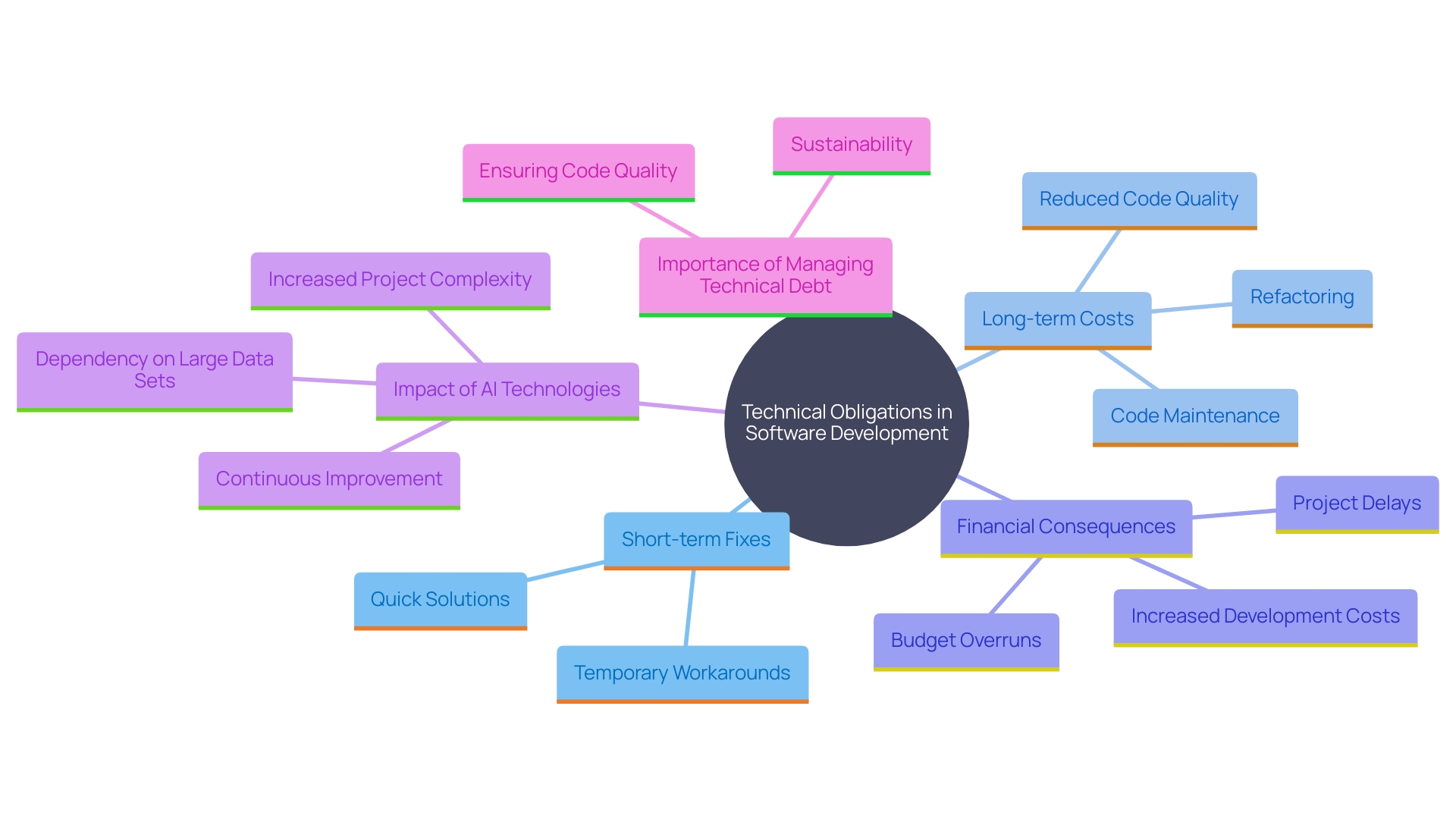
Types of Technical Debt
Technical liabilities appear in various types, particularly source liabilities, design liabilities, architectural liabilities, and documentation liabilities. Code liabilities arise when the code is poorly written or lacks proper organization, leading to inefficiencies and potential issues during maintenance. Design liabilities involve suboptimal design choices that may complicate future development efforts. Architectural liabilities refer to flaws in the overall system structure, which can significantly hinder scalability and performance. Documentation backlog arises from insufficient or obsolete documentation, hindering team members' ability to comprehend and work together efficiently. As the research community and industry have emphasized, handling these various forms of technological liabilities is essential for preserving software quality and productivity.
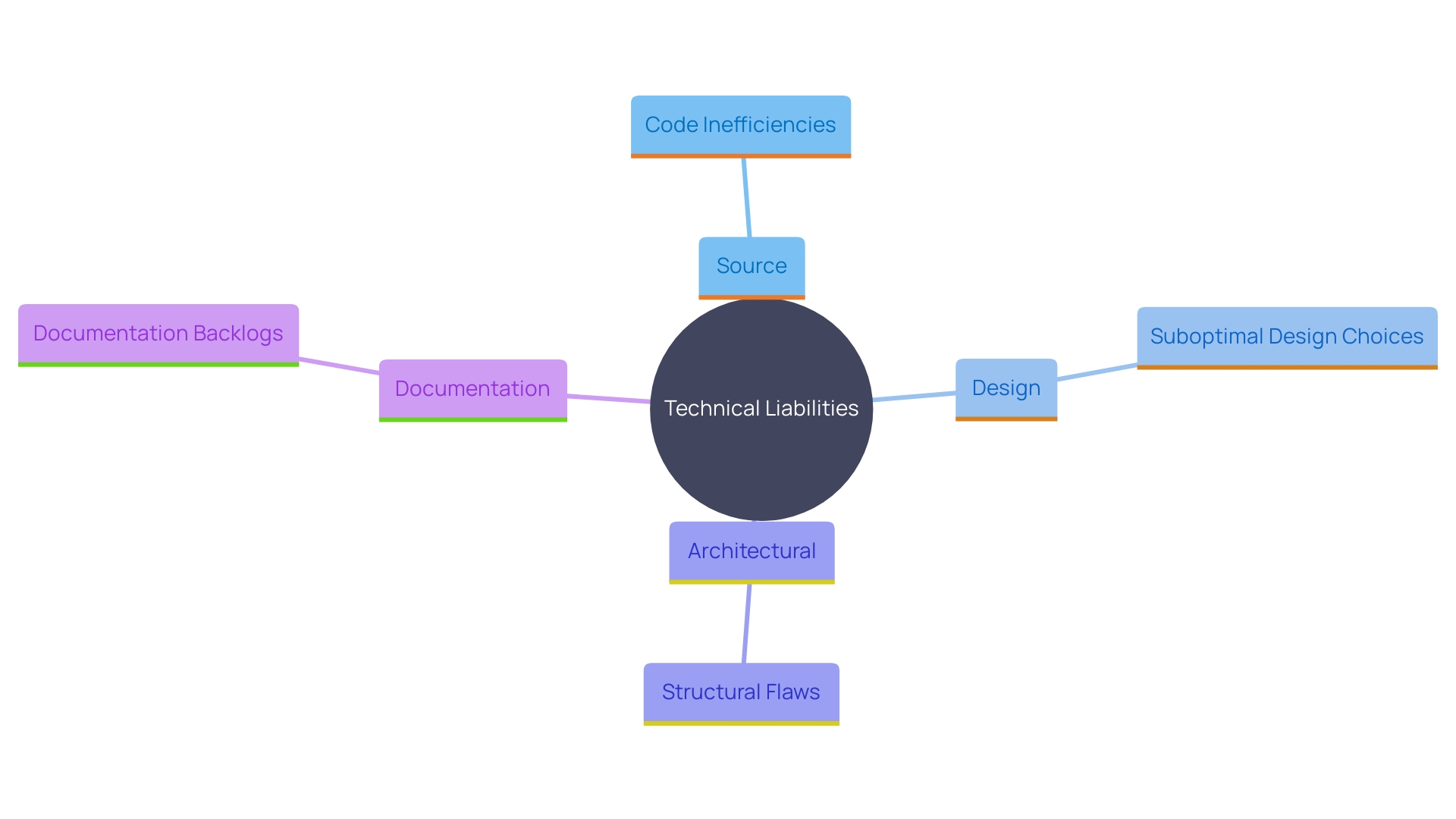
Causes of Technical Debt
Several factors contribute to the accumulation of technical debt. 'Key causes include tight deadlines, which pressure teams to prioritize speed over quality, and the lack of proper testing or reviews of the software.'. Evolving project requirements often lead to rushed changes, exacerbating the issue. Insufficient knowledge transfer among team members further complicates matters, leading to a cycle where initial shortcuts result in increased complexity and maintenance challenges.
Dr. Junade Ali highlights that projects with clear requirements documented before work starts are 97 percent more likely to succeed, emphasizing the importance of robust requirements engineering. Moreover, projects where engineers felt they had the freedom to discuss and address problems were 87 percent more likely to succeed.
Ineffective project management and a lack of understanding of best practices can lead to low-quality code, poor architecture, and challenges with updating and integrating code. As noted, businesses are under enormous competitive pressure to bring modern solutions to market but struggle due to limited budgets and the scarcity of IT talent. This leads to increased expenses for software creation and oversight, worsening system liabilities and leaving fewer resources for innovation.
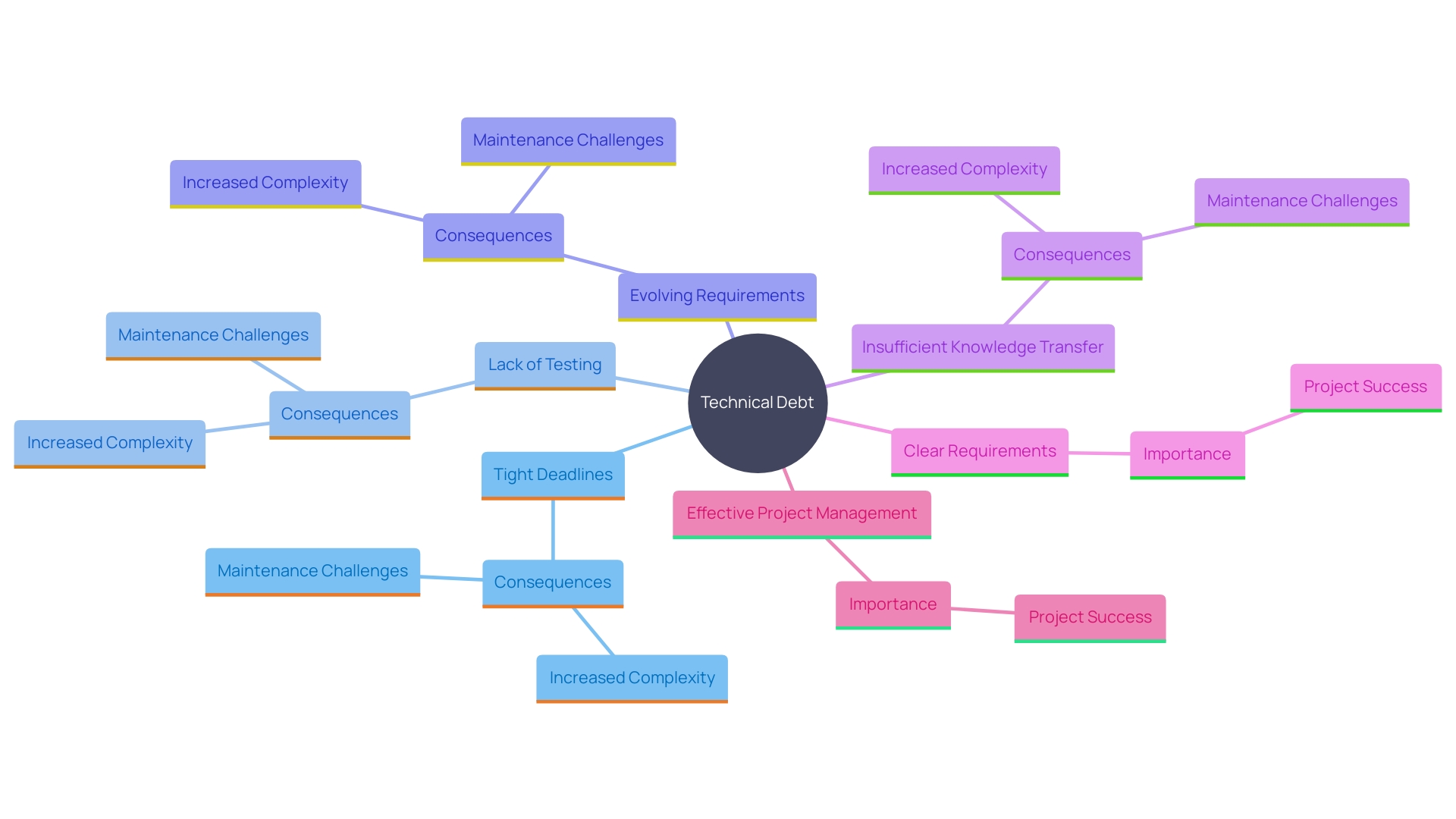
Consequences of Unaddressed Technical Debt
Neglecting to tackle technology liabilities can lead to considerable consequences, such as diminished software quality, heightened maintenance expenses, lower team efficiency, and delayed time-to-market for new functionalities. As time passes, unresolved issues can result in a codebase that is challenging to manage, causing frustration for programmers and possibly affecting the overall success of the project. Based on recent research, 58% of organizations are managing several ongoing initiatives focused on tackling technological liabilities, emphasizing its extensive influence. As the IT industry evolves rapidly, outdated tools and frameworks can exacerbate these issues, particularly for teams with limited knowledge of best practices. Specialists observe that although developmental obligations can occasionally be a tactical decision to accelerate market entry, it necessitates careful management to prevent prolonged adverse effects. The research community has been actively investigating methods to enhance the management of software obligations, emphasizing collaboration between researchers, tool vendors, and practitioners to improve software creation productivity and quality.
Measuring Technical Debt
Assessing technological liabilities requires a comprehensive analysis of its effects on the creation process. Successful evaluation can be accomplished through different measures such as code complexity, code churn, and the ratio of new feature creation to maintenance tasks. Instruments and methods have advanced to assist in measuring development liabilities, allowing groups to prioritize corrective actions effectively. This practice has gained traction since a 2010 Future of Software Engineering workshop paper highlighted the importance of improving software creation productivity and quality through better management of liabilities. The sector has acknowledged that no universal solution is available for assessing technological liabilities, but a complete set of tools is crucial for efficient oversight. Ongoing cooperation among researchers, tool providers, and practitioners is essential to close gaps and improve software engineering practices.
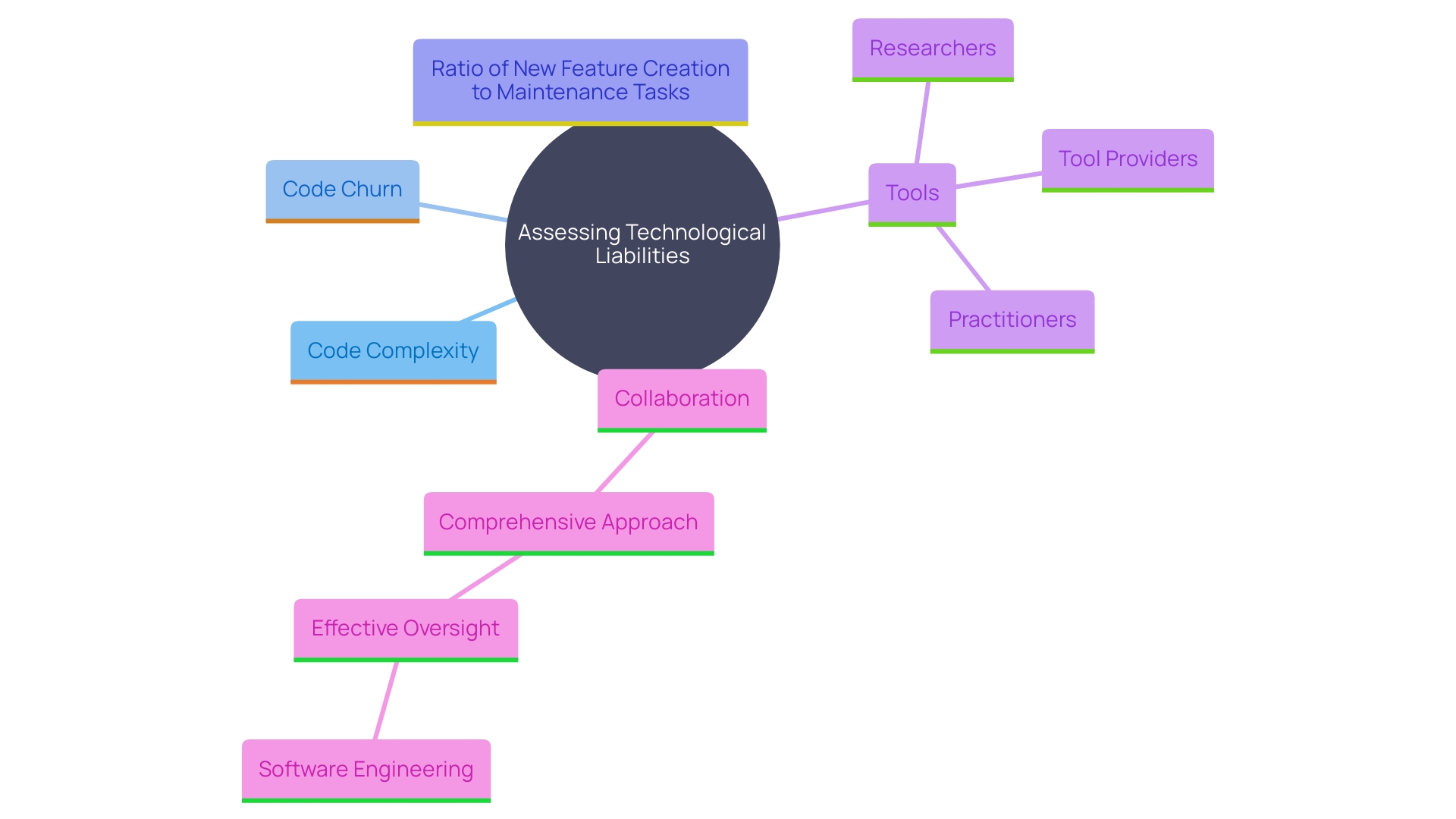
Managing Technical Debt
Handling engineering obligations necessitates a forward-thinking strategy that involves consistently evaluating and prioritizing liabilities, designating resources for restructuring and enhancement, and promoting a culture of excellence within the programming group. Applying coding standards, performing routine code evaluations, and designating time in sprints specifically for tackling technical liabilities are essential strategies to ensure it stays manageable. Based on findings by Veracode, 42% of applications possess security liabilities that go unaddressed for more than a year, highlighting the necessity of ongoing remediation and incorporating security into the software creation life cycle (SDLC). By fostering collaboration between researchers, tool vendors, and practitioners, the vision from the 2010 Future of Software Engineering workshop can be realized, leading to improved software development productivity and quality. The alignment of interests between researchers and practitioners is crucial in closing the gaps and addressing the challenges posed by technical debt.
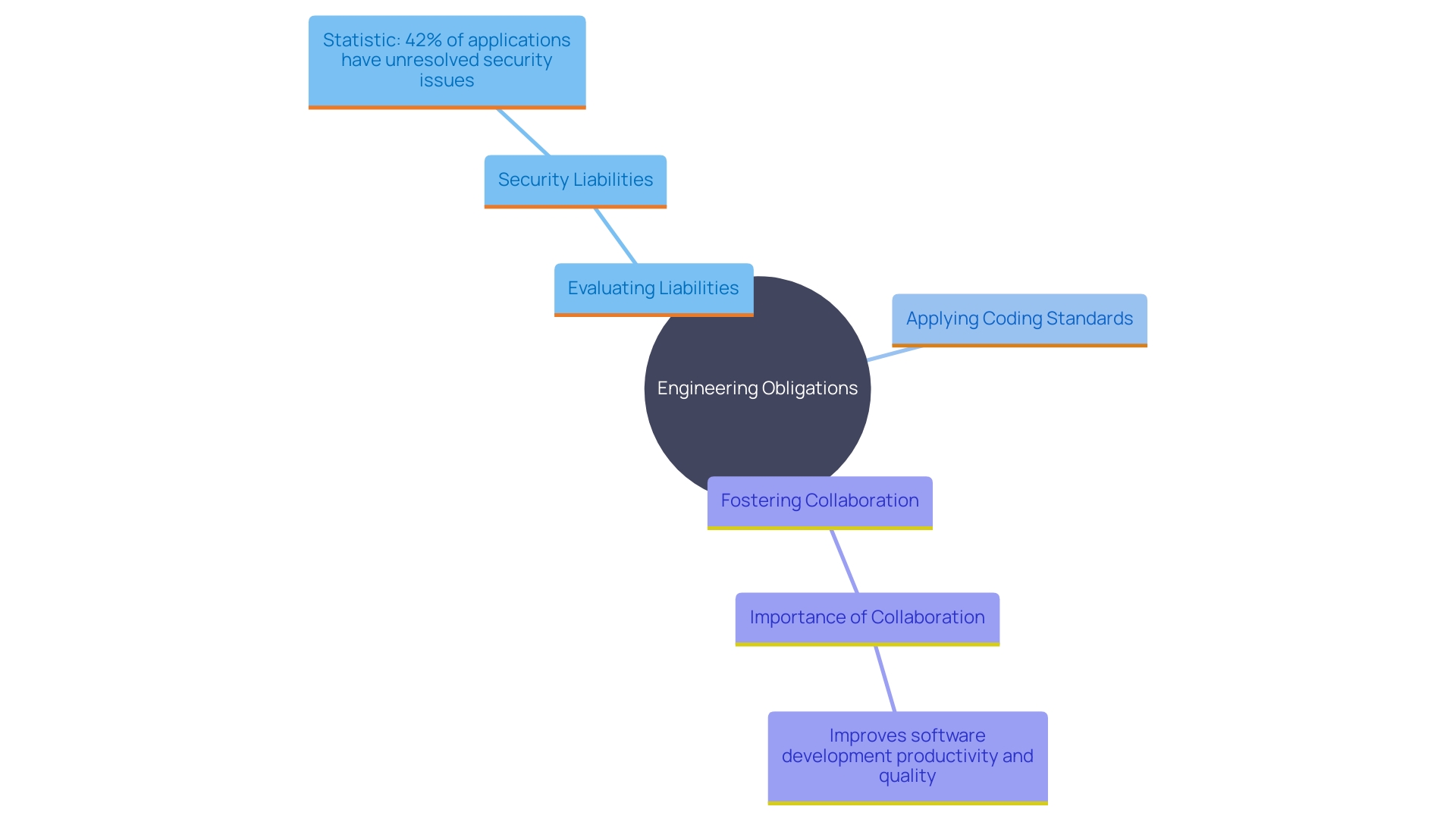
Conclusion
Addressing technical debt is paramount for maintaining the quality and efficiency of software development. Understanding its various forms—ranging from code and design debt to documentation debt—allows teams to identify potential pitfalls early in the development process. By recognizing the causes of technical debt, such as tight deadlines and insufficient testing, developers can implement strategies that prioritize quality alongside speed.
The consequences of neglecting technical debt can be severe, leading to increased maintenance costs and decreased productivity. As highlighted, many organizations are currently grappling with the repercussions of unaddressed technical debt, which underscores the necessity for proactive management. This includes regular assessments, implementing coding standards, and fostering a culture of quality within development teams.
Effective measurement of technical debt through various metrics enables teams to prioritize remediation efforts efficiently. By leveraging the right tools and fostering collaboration among researchers, tool vendors, and practitioners, organizations can enhance their software development practices. Ultimately, managing technical debt not only safeguards future productivity but also ensures the delivery of high-quality software, paving the way for sustainable success in a competitive landscape.
Frequently Asked Questions
What are technical obligations in software development?
Technical obligations refer to the future costs associated with revising or enhancing software due to hurried decision-making. They emphasize the need for a balance between quick delivery and maintaining long-term code quality.
Why are technical obligations important?
They are crucial because taking shortcuts in software development can result in a codebase that is difficult to maintain and evolve, ultimately leading to increased costs, time, and resource expenditure in the long run.
What types of technical liabilities exist?
Technical liabilities can be categorized into several types: Source liabilities (poorly written or disorganized code), Design liabilities (suboptimal design choices complicating future development), Architectural liabilities (flaws in the system structure affecting scalability and performance), and Documentation liabilities (insufficient or outdated documentation that hinders team collaboration).
What causes the accumulation of technical debt?
Key causes include tight deadlines that prioritize speed over quality, lack of proper testing or reviews, evolving project requirements that lead to rushed changes, and insufficient knowledge transfer among team members.
What are the consequences of neglecting technical liabilities?
Neglecting these liabilities can lead to diminished software quality, increased maintenance costs, lower team efficiency, and delayed time-to-market for new features.
How can organizations assess their technological liabilities?
Assessment can be done through measures like code complexity, code churn, and the ratio of new feature creation to maintenance tasks.
What strategies can help manage technical obligations effectively?
Effective management requires ongoing evaluation and prioritization of liabilities, designating resources for restructuring and enhancements, and promoting a culture of excellence within the development team.
How does AI impact technical obligations?
While AI technologies can enhance developer productivity, they can also lead to an increase in technical debt. It is essential to manage this debt strategically to avoid future system vulnerabilities.
What is the role of collaboration in managing technical obligations?
Collaboration between researchers, tool vendors, and practitioners is vital for improving software development productivity and addressing the challenges posed by technical debt.
What is the significance of good requirements engineering?
Clear documentation of requirements before the start of a project increases the likelihood of success by providing a solid foundation for development, reducing the risk of miscommunication and errors.




